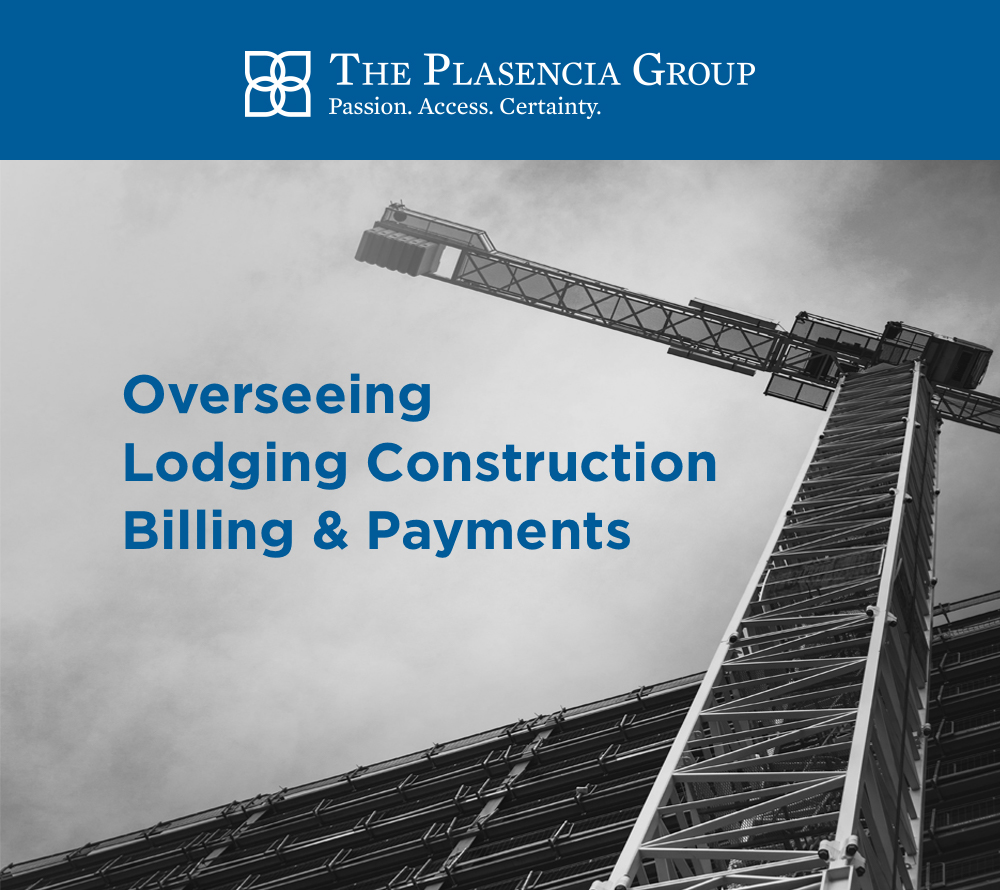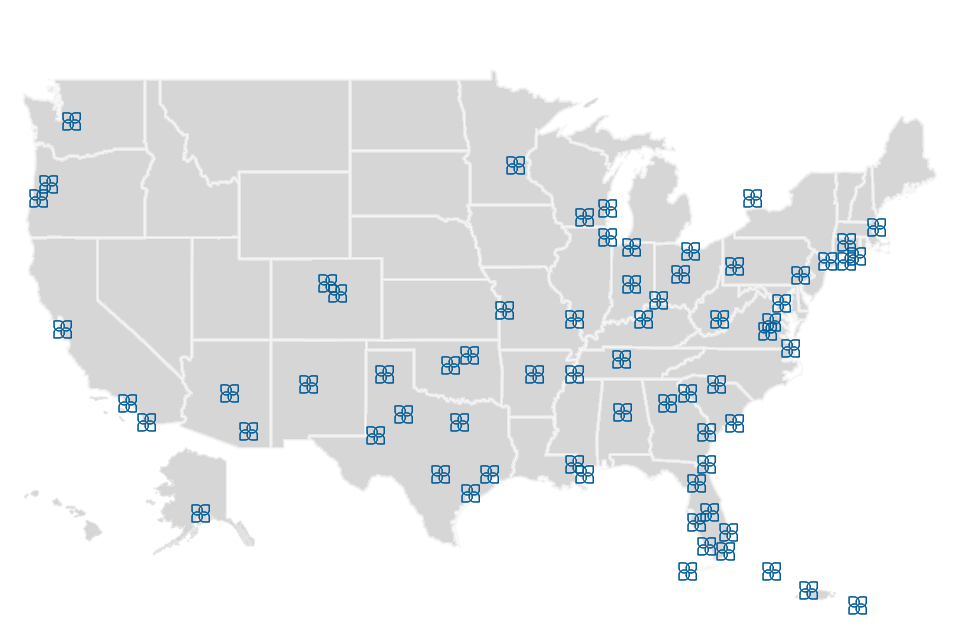
Posted January 26, 2021
Clear up billing headaches using this guide
The global slowdown in travel has disrupted lodging development and renovation projects since the widespread safer-at-home orders were issued in March 2020. Some owners and developers halted construction projects altogether to comply with governmental emergency orders. Meanwhile, others were able to keep projects on track or even accelerate their schedules while occupancy remained low and guest and operations disruptions could be minimized.
Whether a capital project was paused or continued uninterrupted, the principals of The Plasencia Group have assisted its Development Management Consulting clients on ways to ensure that contractor billing and payment requests are properly prepared and accurately represent the value of the work completed for each billing period.
Further, our team has offered guidance to lenders and servicers funding lodging-related construction debt to ensure that loan draws are used as originally proposed and construction projects are completed without any cut corners or deviations from the approved construction documents.
Our general guidance on construction billing and payment follows four key steps, outlined as follows:
1. Verify accurate billing requests relative to work completed.
- General contractors (GC) should submit their billing requests using standard forms AIA G702 (application for payment) and G703 (trade payment breakdown) or an Excel workbook equivalent. The G703 should include sufficient detail to accurately verify billed work progress.
- Construction trades should be included as separate line-item sections (e.g., drywall, painting and wall coverings, tile work, plumbing work, etc.).
- Each construction trade section should be further subdivided into logical construction zones such as floor numbers or building areas (lobby, meeting room, etc.) for accurate completion evaluations.
- Work progress and associated billing requests should be verified by a project manager during consistent on-site inspections.
- Billings are usually prepared mid-month for submittal, typically on the 20th day of the month. The executed contract agreement will usually define these billing terms.
- Any variances relative to work in place are identified based upon the site inspection and a billing revision request is then issued to the GC.
- A final revised billing request is then issued by the GC with all agreed revisions. This final pay application is typically notarized for confirmation and finality.
- All off-site material billing requests should to be accompanied by:
- Evidence of warehousing insurance;
- A bill of sale; and,
- Photos of the materials at their storage location.
2. Verify payment to second-and third-tier subcontractors.
- The project manager should obtain partial lien waivers from the GC and major second-tier and third-tier subcontractors, and then final lien waivers for the final payment request. This step helps to avoid unintentional nonpayment to subcontractors by the GC, which may result in the issuance of Mechanics’ Liens on the property.
- The sum of the partial lien waivers each month should tie approximately to the overall amount of the request. In some cases, the project manager may establish a lower cutoff value for submittal of lien waivers from smaller vendors and suppliers to ensure all major suppliers are being paid.
3. Evaluate general contractor payment holdbacks (aka retention).
- Money is withheld at an amount equal to 10% of each billing request submitted by a GC (a practice commonly known as retention) to ensure that all work requirements and quality levels are maintained to the levels required in the contract documents.
- AIA contract agreements typically allow for a reduction of contracted retention holdback amounts at the half-way mark of a project, from 10% to 5%, if ownership and the design team agree that the GC continues to meet all contract requirements.
- Final reductions in retention amounts withheld from the GC’s payment are at the owner’s discretion and these final incremental reductions can be used as both a carrot and a stick to encourage progress and work completeness.
- Retention is typically further reduced to 2.5% as the project nears completion, subject to verification of work quality and completeness.
- Typically, the final 2.5% is withheld from GC billing requests until all required close-out documents are received, at which point the retention amount is released for final payment.
4. Prepare close-out documents and final payments.
- Final retention release is contingent upon receipt of a complete set of close-out documents which need to be carefully reviewed for completeness. Documents include:
- As-built shop drawings (digital files, paper copies, or both as specified in the contract agreement);
- Operation and Maintenance (O&M) manuals for major mechanical, electrical and plumbing equipment;
- Training manuals for property engineers;
- Warranty documentation for all major equipment; and,
- Final lien waivers from the GC as well as any second-tier or third-tier subcontractors who have previously submitted partial lean waivers.
Construction project accounting and billing can be complicated, especially if there were stops and starts during the course of a project due to factors beyond the contractor’s control. Our team of lodging development and renovation experts can provide thoughtful insights that may save borrowers, lenders or servicers thousands of dollars.
Call a member of our team to discuss how we can help to save money on your current and upcoming capital projects by applying the expertise of our lodging development and renovation professionals.
…that The Plasencia Group has been privately owned since it was founded in 1993?
We’re not distracted by quarterly reports, earnings calls or answering to Wall Street analysts, the media or anyone other than our clients.


